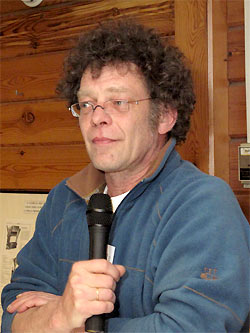 |
Bill Blake Survey is a key aspect of heritage documentation as recognised by the ICOMOS general assembly at Sophia in 1996 : |
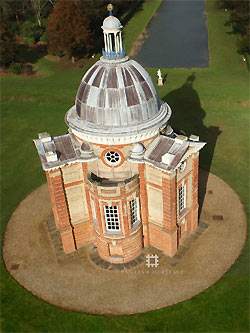 |
|
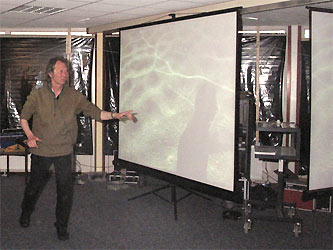 |
(ICOMOS is an international non-governmental organization of professionals, dedicated to the conservation of the world's historic monuments and sites.) |
|
Bill Blake |
||
The pavilion was built between 1709 and 1711 by Thomas Archer at the request of Henry Grey, Duke of Kent. The KAP work was carried out to enable inspection of the roof which protects the interior decoration comprising elaborate trompe l’oeil wall paintings by Louis Hauduroy in 1712. Olympus EP1 KAP shot taken for condition recording of hidden roof surfaces. The Website BBDH |
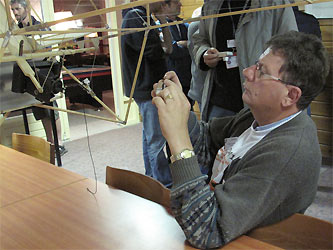 |
Jan Westerink Via Skype, Jan Westerink share with us his project to build a triplane kite identical to the one built in the Thirties by Valentine Oesterle and his original way of shooting. |
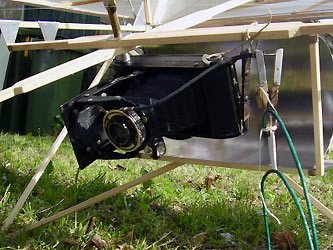 |
François Périault, président of CVCF |
I see the smoke at the wick and then fly the small papers. The photo is taken. But, the triplane plunges to the ground and breaks. " The organizers brought us a surprise. The triplane was in Dordrecht, downstairs in the hall.. All about "first kites" |
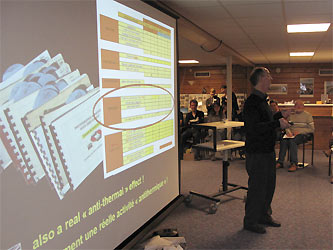 Bernard-Noël Chagny |
Bernard-Noël Chagny In a very different style, Bernard-Noël Chagny talks about his work in archeology. Bilingual presentation provided live by Christian Becot, with lots of humor (because it is difficult to know who speaks English and who speaks French), for a job yet very serious. |
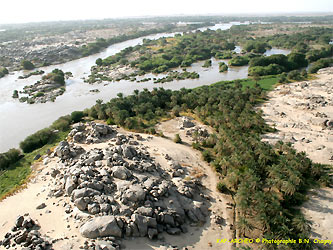 Third cataract of the Nile in Sudan - 2006 - BN Chagny |
A number of data are automatically stored for each photo: altitude, cape, wind speed, timing ... Then he transfers all this data in his notebooks with sketches of the site. A second video monitor allows the archaeologist to monitor real-time shooting. I am very impressed by all this rigour and by the modesty of Bernard-Noël with one of his KAP is currently at the Louvre. Simon Harbor Simon Harbor, for his part, tackles the risks and safety issues related to KAP. |
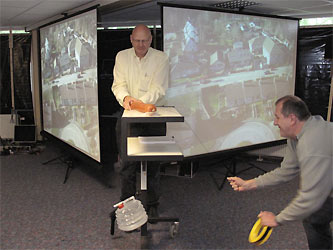 |
According to Simon, risk falls into 3 categories: |
If damage does occur we are likely to be able to repair or replace. But, the risk to people, must be an absolute concern. |
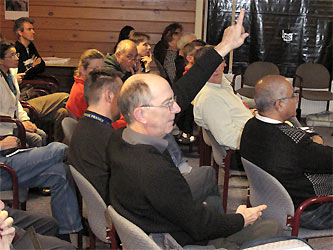 |
Christian Bécot In the field of simplicity there is Christian Becot. He invented the "Filalu" rig, simple and lightweight (25 grams). Moreover, it is auto-rotating. |
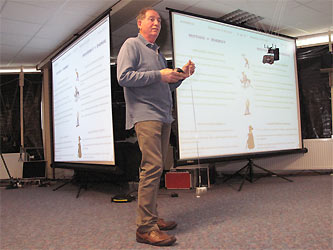 |
The strands of Picavet act as speed brakes, the arc stabilizer is effective against the swinging cross and the Cross Picavet by James Gentles act against pivoting: Each solution is a compromise. Christian Bécot Website |
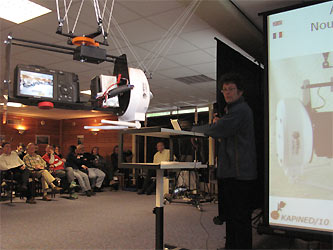 |
Peter Bults One of the organizers, Peter Bults, covers the latest Kapshop: a new compact rig driven by remote control through a small radio control the size as an Iphone. This radio remote control servos and a return trip with video. Kapshop Equipment Tony Cunningham A versatile Ple system, with detailed photos, is narrated by Tony Cunningham. As we are going to buy a fishing rod to initiate us to the PAP (pole aerial photography), I made drawings of assembly the camera on the pole, with either a U or by ring.
|
|
Peter Bults |
||
Linnar Edesi Linnar Edesi, VP-Systems, has developed portable control devices for remote controlled video and photography. He shows the CAMremote, integrated miniature remote control devices for cameras and camcorders. Several digital cameras / camcorders from Canon, Nikon, Ricoh, Pentax, Sony, Panasonic and Olympus have a remote control feature which utilizes the USB port, an infrared signal or Remote Control Port. |
||
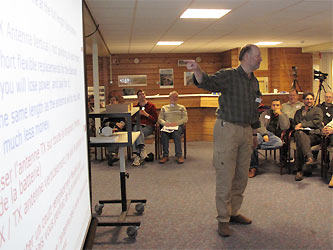 |
Peter van Erkel Peter van Erkel is a passionate batteries, circuit, transmitter ... well, that's the impression he left me. Already in 1997, he wrote an article in The Aerial Eye on battery systems used for KAP and their possible failure. Peter design lightweight circuit and easy to build can be used to power the receiver and servos. Ralf Beutnagel Less technical, presentation of kites used for KAP. Those Ralf Beutnagel. Before, Ralf used the box kites type Domina Jalabert. Now he flies kites with no frame (called "boneless" by google) like parafoil or Flowform. |
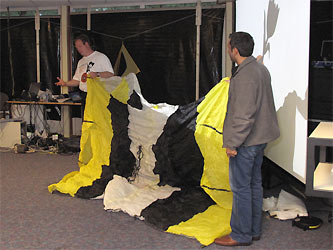 |
Peter van Erkel |
Ralf Beutnagel |
We have a beautiful flight demonstration at Kinderdijk : a 8m2 kite (86 sq ft), 4 keels, 6 cells. More about Ralf. Théo van Houwelingen Still in the field of the kite, Theo shows his kite equipment and take off solo with a little movie. Thank you for this approach very playful and understandable by all. |
| Aldo Hoeben | ||
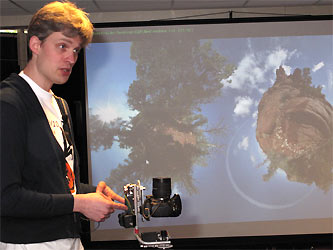 |
Aldo Hoeben has been involved in panoramic photography since 1996. Over the years, he deployed several different viewing technologies, discovering the merits and limitations of each technology. He has initiated new innovations in the field of panoramic imaging. Then started to develop the SPi-V engine; a hardware accelerated panorama, based on Macromedia's acclaimed Shockwave technology. |
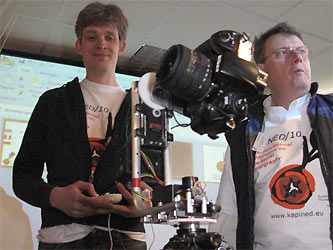 |
Kite Festival - Oostende 2008 |
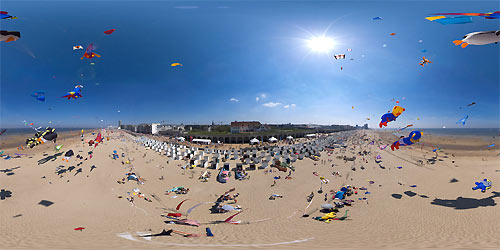 |
"Trying to perfect my KAP technique, I shaved off ~300 grams off my kite rig. The rig is now using the camera battery to power a receiver, gentled and servo, in addition to the camera itself." |
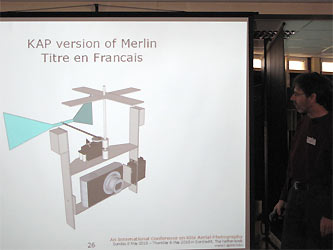 |
Scott Armitage Dunehaven Systems is Scott Armitage, specialist in the design of embedded systems and medical products. He has been granted five patents. |
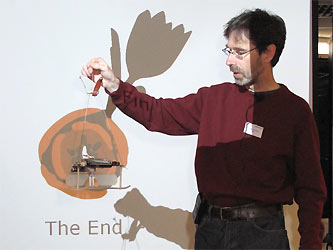 Scott Armitage |
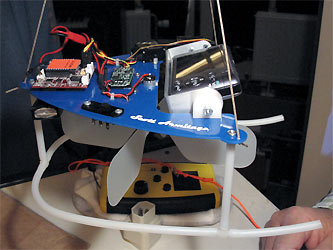 |
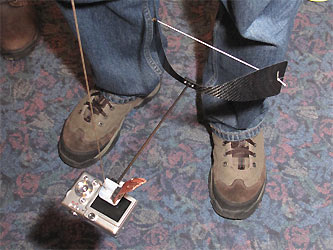 |
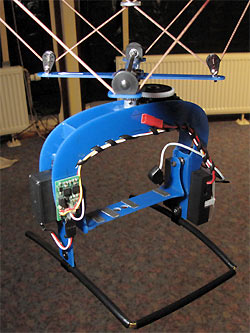 |
And to make it easier with the S4 Rig: Super Simple Stabilize System, without electronics. We take a break to approach all these rigs. Sue Storey |
||
Sue Storey make a knots workshop. We are so involved that we forgot to take pictures! Sorry, Sue. But it also proves that your workshop was very interesting and we learned a lot. |
